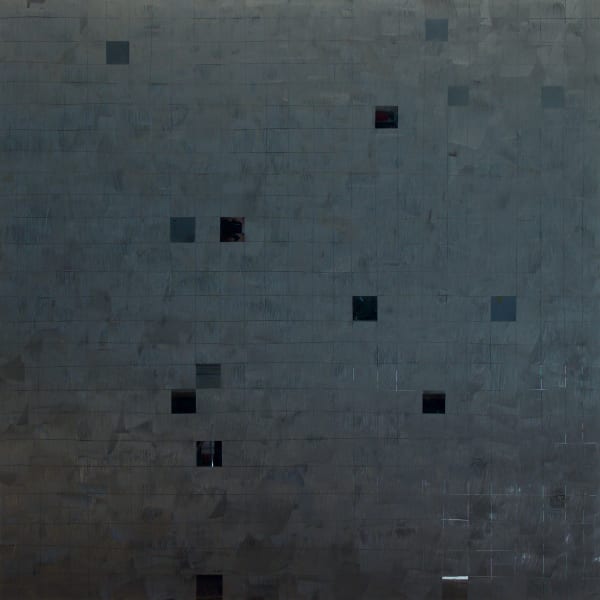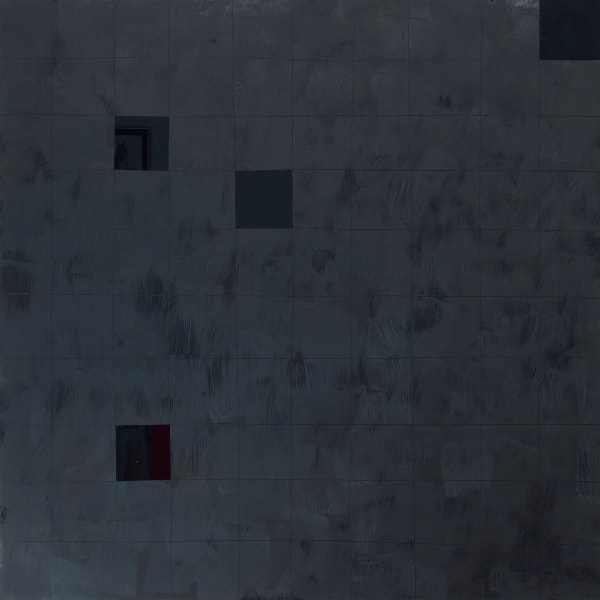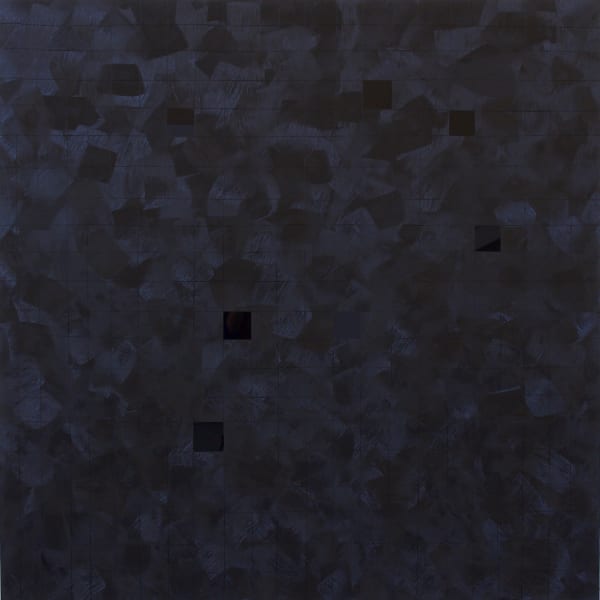-
The Flatland paintings are works that consist of seemingly random squares on a painted surface that reflect the three-dimensional world beyond the painting’s immediate environment. The squares themselves are fashioned by a process of finding regular squares within the fluid lines of a freehand grid that run through the textured paintwork. If chance allows four lines to intersect to create a square, the oil paint is removed from this area of the surface to reveal individual, seemingly disconnected, reflections. The arrangement and number of these squares is determined purely by the process itself. In other words, the process takes editorial control of the painting’s distinctive features without any input from the artist.
The works exist, both as two-dimensional, perspective free, abstract paintings but with portals to the reality of our three-dimensional realm. This is only the beginning because if you include the movement and motion of someone viewing the paintings then angles and reflections change and everything is therefore also relative to the fourth dimension, time.
The title of the series comes from a science fantasy novella called ‘Flatland - A Romance of Many Dimensions' which was written by an English clergyman and schoolmaster called Edwin Abbott Abbott and published in 1884.
Pseudonymously written by ‘A Square’, Flatland is a charming, if slightly pedestrian, tale of imaginary beings or polygons that live on the Euclidian plane. It is both a comment on Victorian society of the time, as well as an examination of the possibility of further dimensions. The book starts with life on the two-dimensional plane populated by lines, triangles, squares, pentagons, circles and so forth where regularity and the number of sides determine social status. One day ‘A Square’ is visited by a three-dimensional sphere which he cannot comprehend until he is taken to tri dimensional Spaceland to see for himself. What follows is a complex mathematical exploration into the idea of multiple dimensions beyond those that we know and understand. Unfortunately, towards the end of the book after returning to Flatland enlightened, our two-dimensional hero is imprisoned for arguing the existence of other dimensions!
The artist read ‘Flatland’ years ago, but it was only recently that he started to see a correlation between his work and the book. A major priority of his work, not just the paintings in the Flatland series, is to make art that happens in the no-mans-land between the second and third dimension, somewhere between painting and sculpture where if it is successful it exists in both or neither.
-







